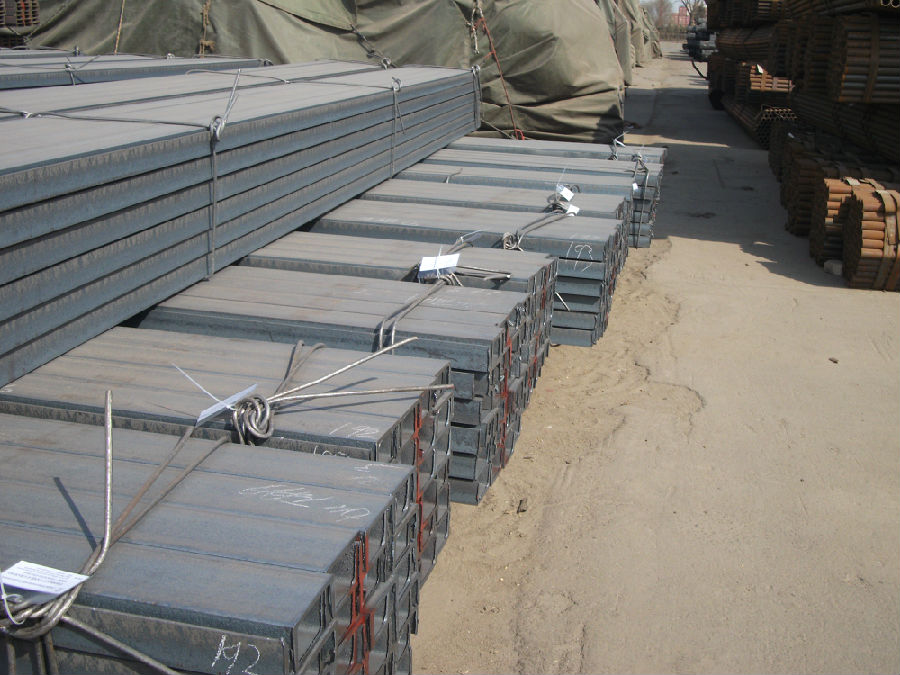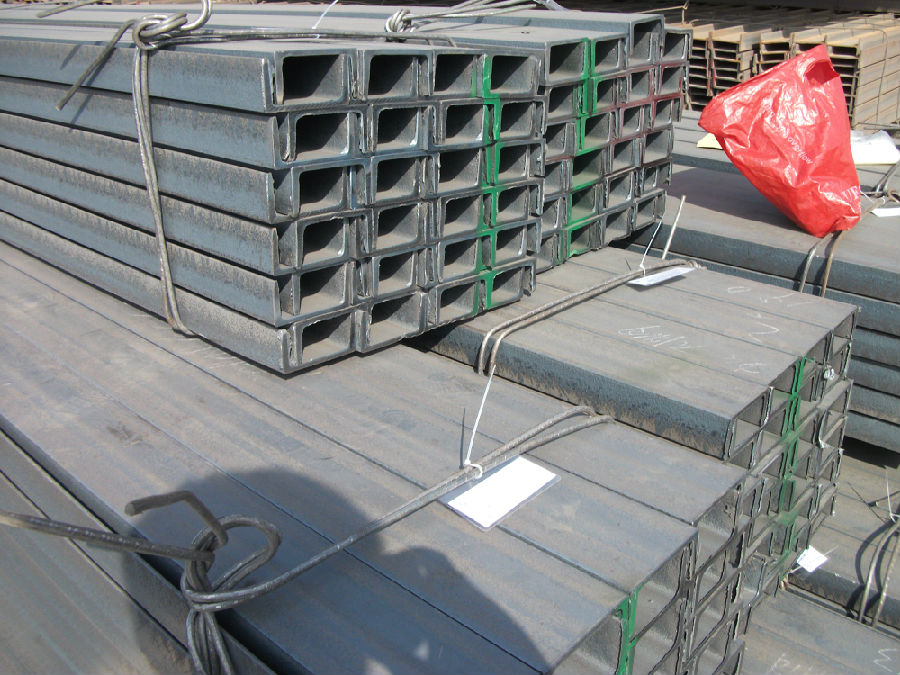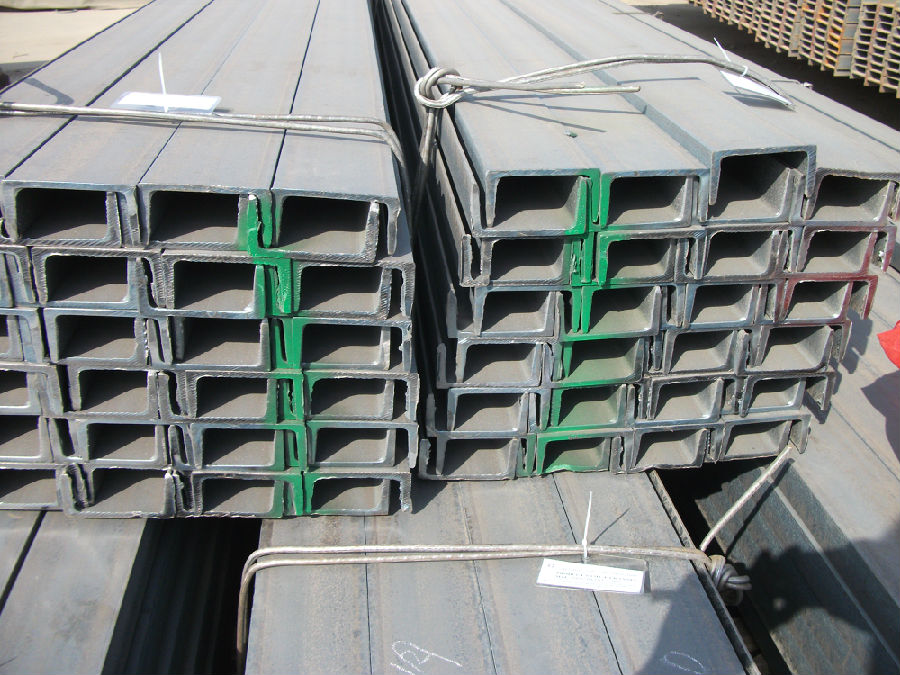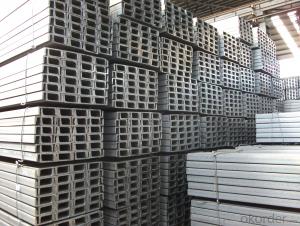S235JR S355JR SS400 A36 Q235 Q345 Hot Rolled Steel Channel Steel /C Channel Steel / U Channel Steel
- Loading Port:
- Tianjin
- Payment Terms:
- TT OR LC
- Min Order Qty:
- 25 m.t.
- Supply Capability:
- 32000 m.t./month
OKorder Service Pledge
OKorder Financial Service
You Might Also Like
Specifications
41*41 steel u slotted channel
Standard: 41x41, 41X21
Thickness: 1.5mm-3mm
zinc plated ,powder coated ,HDG,SS304
slotted
S235JR S355JR SS400 A36 Q235 Q345 Hot Rolled Steel Channel Steel /C Channel Steel / U Channel Steel
1.Standard:Standard: 41x41, 41X21
2.Wall thickness: 1.5mm, 1.6mm, 2.0mm, 2.5mm, 2.7mm (can produce based on your requirement).
3.Length: 3m, 5.8m, 6m .Any length is possible.
4.Surface Treatment: Pre-galvanized or hot-dip galvanized,Powder Coated.
5.Type: Slotted & Plained. Several slot size for you to choose
6.We can make back to back channel.
7.Many connecting sheets to connect two or several strut channels




- Q:Can steel channels be used for roof trusses?
- Yes, steel channels can be used for roof trusses. Steel channels are commonly used in construction for their strength and durability, making them suitable for supporting the weight and load of a roof. They provide structural stability and can be designed to meet specific project requirements.
- Q:What are the advantages of using steel channels over other materials?
- One advantage of using steel channels over other materials is their strength and durability. Steel channels have a high tensile strength, allowing them to withstand heavy loads and resist bending or warping. Additionally, steel is highly resistant to corrosion, making it suitable for outdoor applications or in environments with high moisture levels. Another advantage is the versatility of steel channels, as they can be easily fabricated and shaped to meet specific design requirements. Furthermore, steel is a sustainable material that can be recycled, reducing the environmental impact.
- Q:What are the different welding techniques used for steel channels?
- Steel channels can be welded using different techniques, each with its own advantages and considerations. One commonly used technique is Shielded Metal Arc Welding (SMAW), also known as stick welding. SMAW involves using a consumable electrode coated in flux to create a shield around the weld pool and protect it from atmospheric contamination. This versatile technique can be used in various positions and is suitable for welding steel channels of different sizes and thicknesses. Another popular technique is Gas Metal Arc Welding (GMAW), also known as MIG (Metal Inert Gas) welding. GMAW uses a wire electrode that feeds through a welding gun, along with a shielding gas like argon or a mixture of argon and carbon dioxide. It offers high welding speeds and allows for continuous welding, making it efficient for welding long steel channels. Flux-Cored Arc Welding (FCAW) is similar to GMAW but uses a tubular flux-cored wire instead of a solid wire electrode. This wire contains a flux material that provides shielding gas and creates a slag to protect the weld pool. FCAW is often preferred for outdoor applications or when welds may be exposed to wind or drafts. Submerged Arc Welding (SAW) involves using a continuously fed electrode and a granular flux that covers the weld pool entirely. The arc is submerged under the flux during SAW. This technique is commonly used for welding thick steel channels or when high deposition rates are required. It provides excellent penetration and produces high-quality welds with minimal spatter. Tungsten Inert Gas Welding (TIG), also known as Gas Tungsten Arc Welding (GTAW), is a precise technique that uses a non-consumable tungsten electrode and a shielding gas like argon. TIG welding is often used for welding thin steel channels or when aesthetic appeal is important, as it allows for excellent control over the heat input and produces precise and clean welds. It's important to consider factors such as channel thickness, desired weld quality, available equipment, and specific application requirements when choosing a welding technique for steel channels.
- Q:Can steel channels be used for supporting walkways and platforms?
- Yes, steel channels can be used for supporting walkways and platforms. Steel channels are commonly used in construction projects for their strength and durability. They provide a solid and stable support structure, making them ideal for supporting walkways and platforms. Steel channels can be designed to meet specific load requirements and can be easily assembled to create a secure and reliable structure. Additionally, steel channels can be galvanized or coated for increased corrosion resistance, ensuring their longevity and safety.
- Q:Own attic, choose I-beam or channel?
- Channel steel: used for construction and mechanical use of carbon structural steel, is a complex cross-section of steel.Channel characteristics:Channel steel can change the structure of the building, and save construction materials.If the channel is constructed, it will be quick enough to be ready for use without waiting.
- Q:What are the different methods of surface preparation for steel channels?
- Steel channels can be prepared for surface treatment in various ways, each with its own purpose and outcomes. Some commonly utilized methods are as follows: 1. To rid the surface of rust, scale, and contaminants, abrasive blasting is employed. This technique involves propelling abrasive particles onto the steel channels using high-pressure air or water. It leaves behind a clean and rough surface, ready for further treatment or coating. 2. Chemical cleaning involves the use of chemicals to eliminate surface contaminants and oxides from the steel channels. Acid pickling is a prevalent chemical cleaning process, where the channels are submerged in an acid bath to dissolve rust and scale. Another method is alkaline cleaning, which employs alkaline solutions to remove organic contaminants. 3. Mechanical cleaning necessitates the use of mechanical tools like wire brushes, scrapers, or sandpaper to physically eliminate contaminants from the surface of the steel channels. It is typically employed for smaller areas or specific cleaning needs. 4. Power tool cleaning involves the use of power tools such as grinders, sanders, or wire brushes to mechanically clean the surface of the steel channels. This method is effective in removing heavy rust, mill scale, and coatings. 5. Solvent cleaning involves using solvents to dissolve and eliminate contaminants from the surface of the steel channels. It is commonly used for light cleaning and degreasing purposes. 6. Water jetting is a method that utilizes high-pressure water jets to clean the surface of the steel channels. It is efficient in removing loose rust, paint, and other debris. Choosing the appropriate method of surface preparation is crucial, taking into consideration the specific requirements of the steel channels, such as the extent of surface contamination, desired cleanliness level, and the type of coating or treatment to be applied. Following the appropriate surface preparation process ensures better coating adhesion, improved corrosion resistance, and enhanced overall performance of the steel channels.
- Q:What are the different types of connections for steel channels in modular construction?
- In modular construction, steel channels are commonly used for structural purposes due to their strength and versatility. There are several types of connections that can be used with steel channels in modular construction. These connections are designed to provide structural integrity and stability to the modular building. One of the most common types of connections for steel channels is bolted connections. Bolted connections involve the use of bolts to connect two or more steel channels together. This type of connection is relatively easy to install and provides excellent strength and stability. Bolted connections can be used in various configurations, such as end-to-end connections or connections at angles. Welded connections are another popular type of connection for steel channels in modular construction. Welded connections involve the fusion of two or more steel channels using heat and pressure. This type of connection provides a strong and durable bond between the channels, ensuring structural stability. Welded connections are commonly used in applications where high load-bearing capacity is required. Another type of connection for steel channels is the use of brackets or cleats. Brackets or cleats are metal pieces that are attached to the steel channels using bolts or welds. These brackets or cleats provide additional support and reinforcement to the connection, enhancing the overall strength and stability of the modular structure. In some cases, steel channels in modular construction may also be connected using adhesive or epoxy. Adhesive connections involve the use of high-strength adhesives or epoxy resins to bond the steel channels together. This type of connection is often used in applications where a seamless and aesthetically pleasing finish is desired. It is important to note that the type of connection used for steel channels in modular construction depends on factors such as the load-bearing requirements, the specific modular design, and the construction method. It is crucial to work with experienced engineers and construction professionals to determine the most suitable connection type for a specific modular construction project.
- Q:Can steel channels be used for supporting solar panels?
- Yes, steel channels can be used for supporting solar panels. Steel channels are commonly used in construction for their strength and durability, making them suitable for supporting the weight of solar panels. They provide a stable and reliable structure to hold the panels in place, ensuring their proper installation and functioning. Steel channels can be easily customized and adjusted to fit the specific requirements of the solar panel installation, making them a versatile choice for supporting solar panels. Additionally, steel channels offer resistance against weather conditions, ensuring the long-term stability and safety of the solar panel system.
- Q:How do steel channels contribute to sustainable design?
- There are several ways in which steel channels contribute to sustainable design. To begin with, steel channels are manufactured using recycled materials. Steel is widely recognized as one of the most recycled materials globally, with a substantial proportion of steel production coming from recycled scrap. This practice decreases the demand for raw materials and diminishes energy consumption during the manufacturing process, ultimately resulting in a reduced carbon footprint. Moreover, steel channels possess a remarkable lifespan. Due to its exceptional durability, steel can withstand harsh weather conditions and resist corrosion effectively. Consequently, steel channels necessitate minimal maintenance and replacement over time, thereby reducing the frequency of repairs and replacements. This not only conserves valuable resources but also minimizes the construction and demolition waste generated. In addition, steel channels are characterized by their lightweight nature and versatility. These qualities allow for efficient transportation and installation, which, in turn, decreases fuel consumption and associated emissions. Additionally, the versatility of steel channels enables them to be easily repurposed or reused in other projects, extending their lifespan and minimizing waste. Furthermore, steel channels provide design flexibility. The strength and structural integrity of steel enable the implementation of innovative and efficient designs, such as open floor plans and large spans. These designs maximize natural lighting and ventilation, reducing the reliance on artificial lighting, heating, and cooling systems. Consequently, energy consumption is lowered, and greenhouse gas emissions are reduced. Lastly, at the end of their lifespan, steel channels can be recycled. Steel is entirely recyclable, allowing it to be reused indefinitely without any loss of quality. This not only conserves natural resources but also reduces the amount of waste that ends up in landfills. In conclusion, steel channels significantly contribute to sustainable design through their utilization of recycled materials, long lifespan, lightweight and versatile nature, design flexibility, and recyclability. By incorporating these features, construction projects can minimize their environmental impact and promote the development of a more sustainable built environment.
- Q:What are the design considerations for steel channel structures?
- There are several important design considerations that need to be taken into account when designing steel channel structures. These considerations include: 1. Load requirements: Steel channel structures need to be designed to withstand the specific loads that they will be subjected to. This includes both dead loads (the weight of the structure itself) and live loads (the weight of any additional loads that will be placed on the structure). 2. Material selection: The choice of steel material is an important consideration in the design of channel structures. Factors such as strength, corrosion resistance, and cost need to be weighed when selecting the appropriate steel grade for the specific application. 3. Stability: Stability is a critical factor in the design of steel channel structures. The structure must be able to resist lateral forces such as wind or seismic loads without experiencing excessive deflections or failures. 4. Connection design: The design of connections between steel channels is crucial to ensure the overall structural integrity. Proper connection design ensures that the channels are securely fastened together and can transfer loads efficiently between members. 5. Fabrication and construction considerations: The design of steel channel structures should take into account the ease of fabrication and construction. This includes factors such as the availability of standard sizes and shapes, ease of connection, and efficient use of materials. 6. Fire resistance: Steel channel structures may need to be designed to meet specific fire resistance requirements. This can involve incorporating fire-resistant materials or implementing fire protection measures such as fireproof coatings. 7. Durability and maintenance: Considerations for durability and maintenance should be factored into the design of steel channel structures. This includes measures to prevent corrosion, such as proper surface treatments or coatings, as well as accessibility for inspection and maintenance activities. 8. Aesthetics: Depending on the application, the aesthetic appearance of steel channel structures may also be a design consideration. This can involve selecting finishes, coatings, or architectural detailing to enhance the overall visual appeal of the structure. Overall, designing steel channel structures requires careful consideration of various factors such as load requirements, material selection, stability, connection design, fabrication and construction considerations, fire resistance, durability, maintenance, and aesthetics. By addressing these considerations, engineers can ensure the successful and safe implementation of steel channel structures for a wide range of applications.
1. Manufacturer Overview |
|
|---|---|
| Location | |
| Year Established | |
| Annual Output Value | |
| Main Markets | |
| Company Certifications | |
2. Manufacturer Certificates |
|
|---|---|
| a) Certification Name | |
| Range | |
| Reference | |
| Validity Period | |
3. Manufacturer Capability |
|
|---|---|
| a)Trade Capacity | |
| Nearest Port | |
| Export Percentage | |
| No.of Employees in Trade Department | |
| Language Spoken: | |
| b)Factory Information | |
| Factory Size: | |
| No. of Production Lines | |
| Contract Manufacturing | |
| Product Price Range | |
Send your message to us
S235JR S355JR SS400 A36 Q235 Q345 Hot Rolled Steel Channel Steel /C Channel Steel / U Channel Steel
- Loading Port:
- Tianjin
- Payment Terms:
- TT OR LC
- Min Order Qty:
- 25 m.t.
- Supply Capability:
- 32000 m.t./month
OKorder Service Pledge
OKorder Financial Service
Similar products
New products
Hot products
Related keywords



























